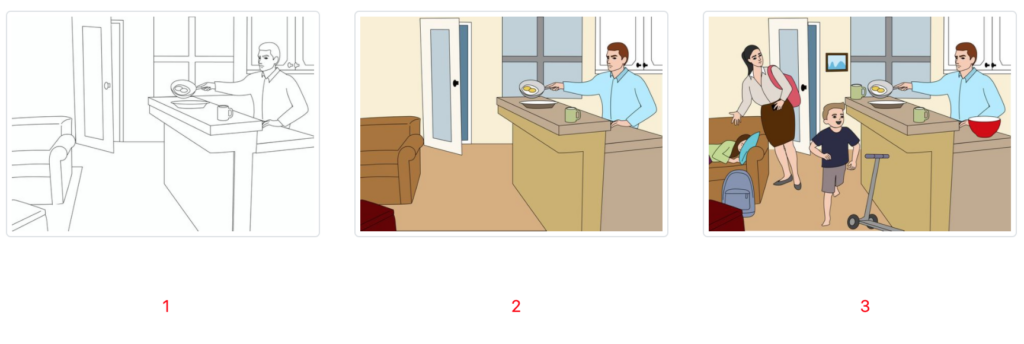Making business decisions based solely on quantitative data is like trying to describe a picture in a coloring book without anything actually having color. You can make some general observations, but to provide deeper insight, you need both color and context.

If quantitative data represent the outlines of a picture in a coloring book (image 1), then EthOS data represents that picture colored in (image 2). EthOS even goes a step further by adding a background and additional elements to the picture so that you can see the full context of the image (image 3).
Compare images 1 and 2 to the outputs from typical qualitative and quantitative studies with self-reported data. There’s certainly a lot of information to be gained, but what’s missing? What didn’t the respondent tell you that you may need to know? Image 3 is a representation of the output from an EthOS study, highlighting how leveraging the EthOS platform brings context and a wealth of additional information to the picture.
Data Visualization Delivers Context
Data visualized in images 1 and 2 could have resulted from the question, “Where did you eat breakfast today and what did you have?”
A very reasonable response could be, “I cooked eggs in my kitchen at home.”
In EthOS, you can ask participants to show you what and where they had breakfast through pictures and videos. The results would be more like image 3, which provides far more context to the answer than Images 1 and 2. You can see that the man providing the response did not just make eggs in his kitchen at home, but he was doing so while trying to get the kids off to school with his wife. There are objects on the counters, floors, and walls. All of this additional data should be taken into account when trying to understand your customers and answer critical business questions.
There’s often a gap between what people say they do and what they actually do. This generally isn’t because they are being dishonest, but because of the fact that everyday behaviors often become so routine, they no longer require thought. This is why it’s critical to capture pictures and videos; so that you can observe behaviors and the context in which decisions are made as people go about their everyday lives.
As researchers, we want our data to tell a story, so we need to provide context to the data by leveraging modern ethnographic techniques. With these techniques, instead of asking people how they use a product or interact with your brand, you should ask them to show you.

